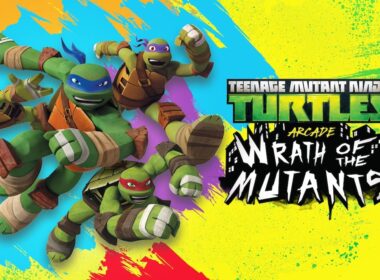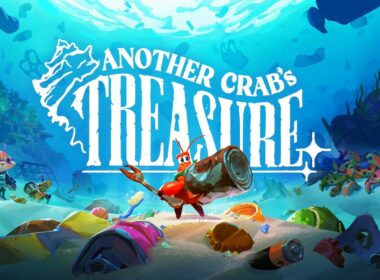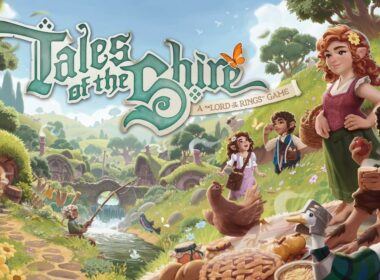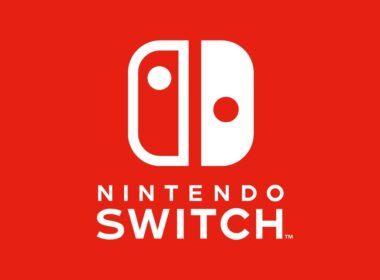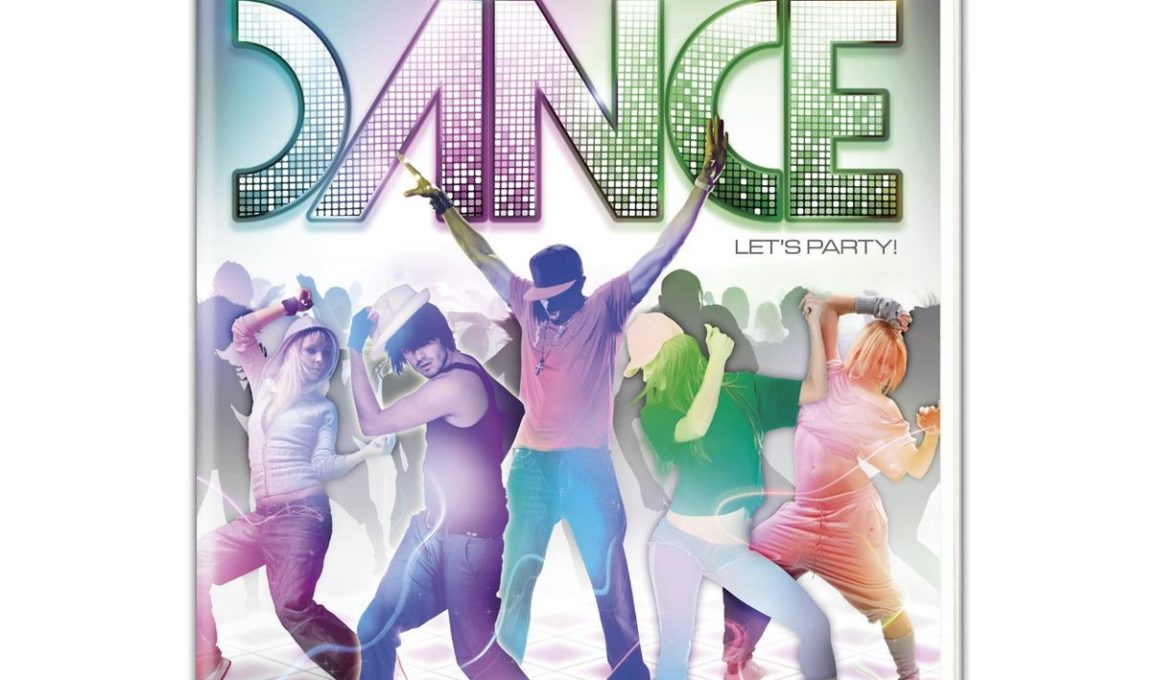In the continual run up to the release of Get Up and Dance on November 4th, developer O-Games has released an extensive question and answer session regarding all aspects of the forthcoming title.
So, for those interested in the development of the dance game, sit down, read and enjoy this Q&A with producer Mark Mainey.
Is this your first experience working on a dance game? How is the process different?
Mainey: Nobody in the studio had experience of developing dancing games so when OG approached us with the concept it was with a little trepidation but also with a great deal of excitement we set about the task.
Gusto has vast experience of using motion capture on our football and golf games, so know exactly what is involved, but we thought it would be a good idea to look into other solutions too. An alternative to using animated models in-game was to video a dancer live on a green screen. We tried some sample data and even though we had not used the technique before it gave great results. In the end we felt because of time pressures and cost that going down the green screen capture route would suit us best, and give the results the publisher desired. We investigated green screen facilities and eventually booked space in the studios at Birmingham University.
To be honest initially we felt a little out of depth with what was required for the dancing side of things. We started approaching dance studios with our requirements but it was a lucky break making a contact through a friend of a friend which lead us to working with Mezzo Forte Dance Company just down the road in Stratford upon Avon. Although Mezzo had never worked in a green screen environment before after a few test visits to the studios they soon grasped the requirements. From then on we simply provided them with a tracklist and they worked a dance choreography and supplied, costumes, make-up, and of course the dancers themselves.
Compared to our previous titles I guess this game differed in that we were creating most of the game content off-site rather than in the studios and due to a tight schedule there was a lot of pressure for it to be right first time. There were a lot of logistics to be managed and good communication and trust between publishers, developers and Mezzo was the key to success.
Mezzo were a great find and their hard work, professionalism and eye for detail resulted in a very high level of quality which I believe is reflected in the final product.

How did you come up with the process of creating the in-game characters?
Mainey: The initial style concept originated from our Creative Lead using flat colours to create a cel shaded /cartoon like style for the dancer. After testing numerous options it was felt that this flat style was the best way of ensuring the dancer would stand out from the background music video making it easier for the player to distinguish between the two. The style had to be simple and bold because at the time we did not have all the videos available so we had to ensure it would stand out against a diverse mixture of colours and animated backgrounds.
The dancer images were then manipulated in Adobe After Effects allowing us to change their clothing colours to best suit the individual background videos.
How important was it to have the official videos in the game?
Mainey: We believe it is very important to have the official videos as the tracklist is made up of well known songs and it is highly likely that most players will already be familiar with them. From this point of view I think anything other than official videos would have been viewed as cheap.
As games makers we always strive to engage the player and create an immersive experience. The official videos help do that by adding credibility and hopefully allowing the player to become engrossed in the music to the point that they are not just dancing to a video but actually performing as the artist in question.
Did you use live action to create the in-game dances or was it created purely from animation? If live action was used did it use mo-cap?
Mainey: We used live action to create the in-game dances. We went with live action as it suited the style we wanted to achieve plus it held advantages over the motion capture and animation method. Time constraints were tight and several factors would have had to have been taken into consideration if we were to go down the animation route.
Firstly a number of 3D models would have to be modelled consisting of dancers of different builds, each with different clothing and textures. In addition a skeleton rig would need building which could be skinned to each model. Finally after motion capture shoots the animation data would need applying to the rig followed by a cleanup eliminating any limb popping or foot sliding.
It was obvious that live action footage would not only give us a more realistic fluidity to the dancer’s movement but also require much less development time.
Talk us through the process of going from data capture to in-game result
Mainey: To start with the dancer is filmed against a green background; green because it’s considered furthest away to the skin tone. This process is commonly used in weather forecast broadcasts were the meteorologist stands in front of a green screen to which weather maps are displayed.
Once the green screen shoot is complete the next step is compositing the image using a technique called chroma keying which is a process for layering two images together. A small colour range from the top image is made transparent revealing another image behind it. Using this technique we would remove the green screen behind the dancer and then begin the post effects process by manipulating colours and removing colours to achieve the required style.
Why use white skinned, almost ghost like, characters in-game? Why not use something more realistic?
Mainey: During early testing at the studios even though the dancers were bathed in light when studying the footage we found that shadows could still be noticed on the faces which made the keying process difficult as there were multiple shades of colours present. The shine of perspiration under the hot lights didn’t help either.
On the second shoot we tried the dancers with children’s white face paint and this helped greatly as the facial colour was now more consistent. By the third shoot Mezzo had acquired a more professional, thicker, face paint (direct from the Royal Shakespeare Company no less) which stood up better to the heat of the lights.
The white also helped distinguish the contrast between face and hair better as the majority of the dancers had fair hair. We asked if it would be possible for all dancers to dye their hair black but unsurprisingly they replied with a resounding NO!
As a consequence we also found that the white allowed us to open up the lens aperture slightly allowing even more light into the camera which further eliminated shadows from the garments and helped create the flat style we were looking for.
How was the technology of the Wii remote implemented?
Mainey: The green screen days were arduous for the dancers as each dance had to be performed twice. Firstly the dancer would perform in the heat of the lights for the green screen take and then immediately dance again with the Wii remote in hand in order to capture movement data to the console development kit. The two performances were then analysed side by side and if any discrepancy was found between the two the data recording would have to be done again. Fortunately the data capture could be done with the lights down but the process still led to some long tiring days
Once in game basically a clever set of algorithms compares the dancer’s data to the player’s data and calculates a score based on how close the two are.
How was the technology of the Move controller implemented?
Mainey: The green screen days were arduous for the dancers as each dance had to be performed twice. Firstly the dancer would perform in the heat of the lights for the green screen take and then immediately dance again with the Move motion controller in hand in order to capture movement data to the console development kit. The two performances were then analysed side by side and if any discrepancy was found between the two the data recording would have to be done again. Fortunately the data capture could be done with the lights down but the process still led to some long tiring days for the girls.
Once in game basically a clever set of algorithms compares the dancer’s data to the player’s data and calculates a score based on how close the two are.
What differences did you notice between the data captured from the Wii & the data captured from the Move?
Mainey: The sensors on the Move motion controller allowed us to more accurately collect data and the faster processors found in the PS3 also allowed us to process more data. During the tuning process the original dancers tested the game for us and most found they could obtain a higher score using the Move motion controller as they felt it was more precise.
What makes Get Up And Dance stand apart from the competition, what makes it unique?
Mainey: Get Up And Dance Group stands out as a unique game mode which allows 1-4 players to team up, form their own dance troupe and give themselves a stage name. The team then take part in a series of talent competitions were the reaction of the audience decides if they make it through to the next round. It’s a coop mode tracing the career of a group of dancers from origin to fame.
Looking at the large variety of other game modes available it’s obvious that the title is Party oriented. We felt that a person would rarely play a dance game on their own with it being more likely to be played by a group of people. In the party mode we split players into teams in order to create a competitive environment.
Will you be making any more dancing games? What’s next for Gusto?
Mainey: We would love to make another dance game! Now we have the core technology in place we can concentrate further on the game experience. We have some great ideas for a spin off project which we hope we will get the chance to try out.

